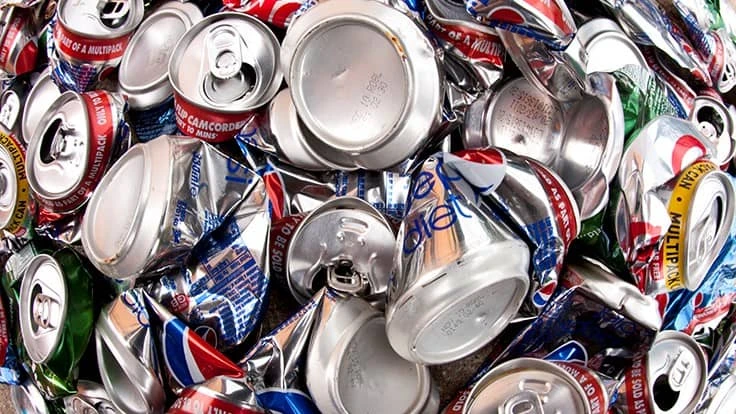
© Steve Allen | Dreamstime.com
Sources report tightening availability of copper and aluminum scrap, a situation that is amplified by difficulties finding trucking and intermodal containers.
While aluminum supply and demand seemed to come into better balance earlier this fall, the opposite happened for red metals. As one trader for a processor with operations in the Upper Midwest and Southeast told Recycling Today in October, a number of copper consumers had planned or unplanned outages scheduled as of mid-October or seemed to be drawing down inventories as the year-end approached.
However, as of mid-November, it appears that copper scrap is in tighter supply.
A supplier of red metals, particularly copper chops, who is based in the Midwest says, “We have seen a decline in some raw material to process, which I believe to be from the beginning of the pandemic.” He says wire supply has been reduced by the “abrupt halt” in construction projects, demolition activity and manufacturing early on in the pandemic. “I think we are feeling that lack of scrap currently.”
The copper processor says consuming mill demand is fluid. “Bottom line, demand domestically (and export as well) moves so quickly, it is hard to keep up. One month, domestic consumers cannot get enough material; the next month, they will push out your delivery a month or two.”
He says export demand has been soft as of late, though some material has been moving to Europe. “I think that has been a new area of exploration for large amounts of different red metals.”
However, the copper processor says obtaining credit insurance for some overseas transactions has been more challenging in the pandemic. “Due to the pandemic, it appears credit insurance companies have downgraded many companies without any basis for doing so,” he says. “Regardless, [it’s] hard to sell to someone, especially in these tough financial times, if you do not have insurance on them.”
Aluminum scrap generation has been inconsistent across the various manufacturing sectors, Andy McKee, materials trading division president for Kalamazoo, Michigan-based scrap processor Schupan, says. However, he adds, on balance, industrial generation as of mid-November is nearly consistent with the corresponding time in 2019 and up from the 50 percent volume reduction the company saw early in the pandemic.
“[Aluminum] mills have had a lot of leverage for last two to three years. We are seeing that trend switch a little bit to favor the scrap side.” – Andy McKee, president of materials trading at Kalamazoo, Michigan-based Schupan
Schupan services a large number of retail locations that accept bottles and cans covered by Michigan’s bottle bill, which was effectively shut down early in the pandemic by lockdown measures, McKee says. Consumers had to stockpile material at their homes despite growing demand for aluminum cans. “There was tremendous demand, not nearly enough supply and customers hoarding UBCs (used beverage cans).”
He adds that when the executive order was lifted in June and residents were able to redeem their bottles and cans, the company saw a very large spike in the volume of cans coming in through the program.
McKee describes demand for aluminum scrap as “very robust,” particularly from aluminum sheet mills that supply the can market. “Demand in the can sector is only strengthening,” he adds, fueled by the pandemic and the growing popularity of sparkling water and hard seltzers, which often are packaged in cans.
When considering aluminum scrap grades more broadly, McKee says, “There is free movement of scrap these days. There were times last year when we would be holding scrap waiting for a mill to take it. That has not come to be the case yet for 2020.”
When it comes to contracted sales for 2021, he says, “We’ve seen a small uptick in overall interest in contract metals.” This has been particularly true of can sheet producers, McKee adds, though most major mills seem eager to lock in as much scrap as possible. “Mills have had a lot of leverage for last two to three years. We are seeing that trend switch a little bit to favor the scrap side.”
However, small scrap dealers that supply Schupan have been “more hesitant to commit to volume, given the uncertain times,” he says, adding that they don’t want to find themselves on the bad side of a deal or unable to fulfill their orders.
McKee and the copper processor both mention challenges obtaining trucking.
“Transportation at the moment is horrible,” the copper processor says. “The price to move material is almost double at this point on runs that we have been making all year. The only way to secure a truck is to pay more.”
While the copper processor says it’s hard to predict what the start of 2021 will bring for copper scrap, he says he doesn’t see much easing for truck availably or pricing until the second quarter of next year.”
McKee says Schupan has seen truck availability and pricing remain relatively steady in lanes where the company has consistent movement each month. “It’s when you are trying to increase capacity that it becomes very expensive.”
Get curated news on YOUR industry.
Enter your email to receive our newsletters.
Latest from Recycling Today
- ReMA opposes European efforts seeking export restrictions for recyclables
- Fresh Perspective: Raj Bagaria
- Saica announces plans for second US site
- Update: Novelis produces first aluminum coil made fully from recycled end-of-life automotive scrap
- Aimplas doubles online course offerings
- Radius to be acquired by Toyota subsidiary
- Algoma EAF to start in April
- Erema sees strong demand for high-volume PET systems






